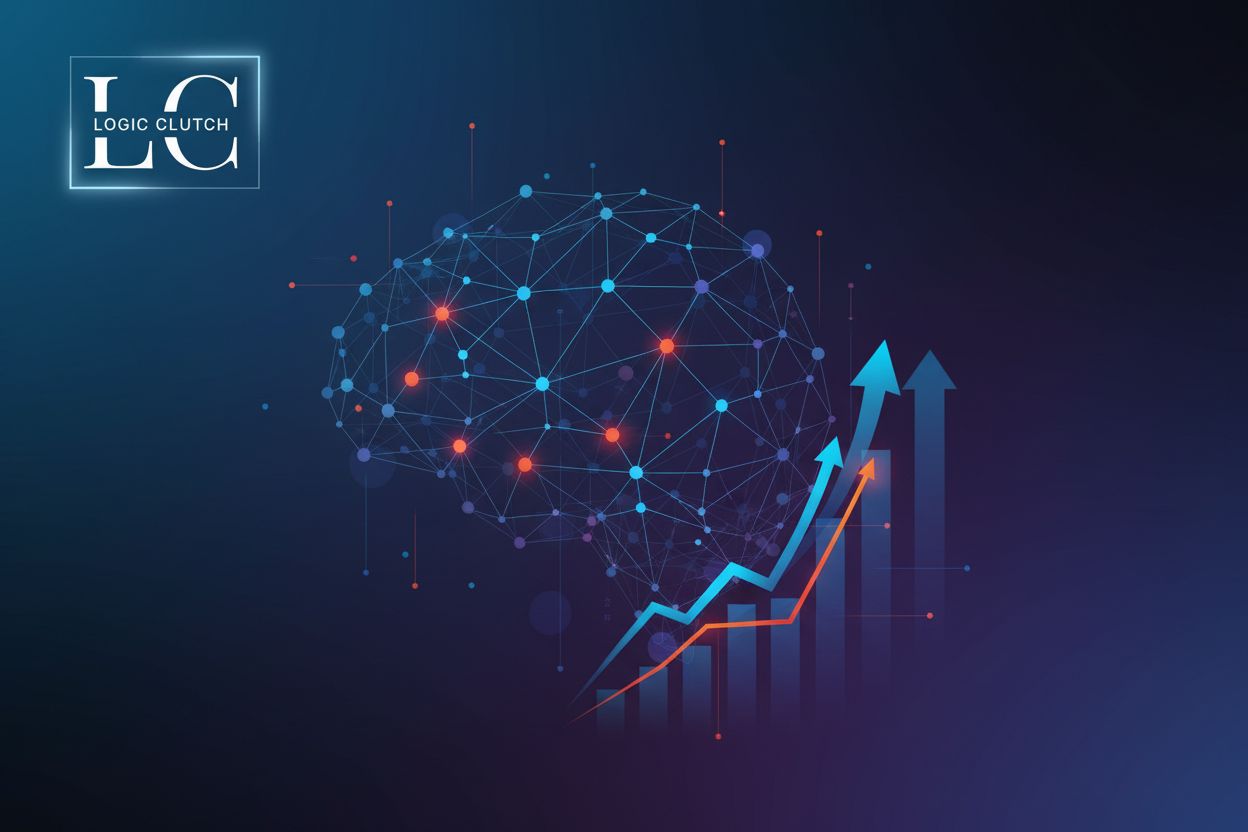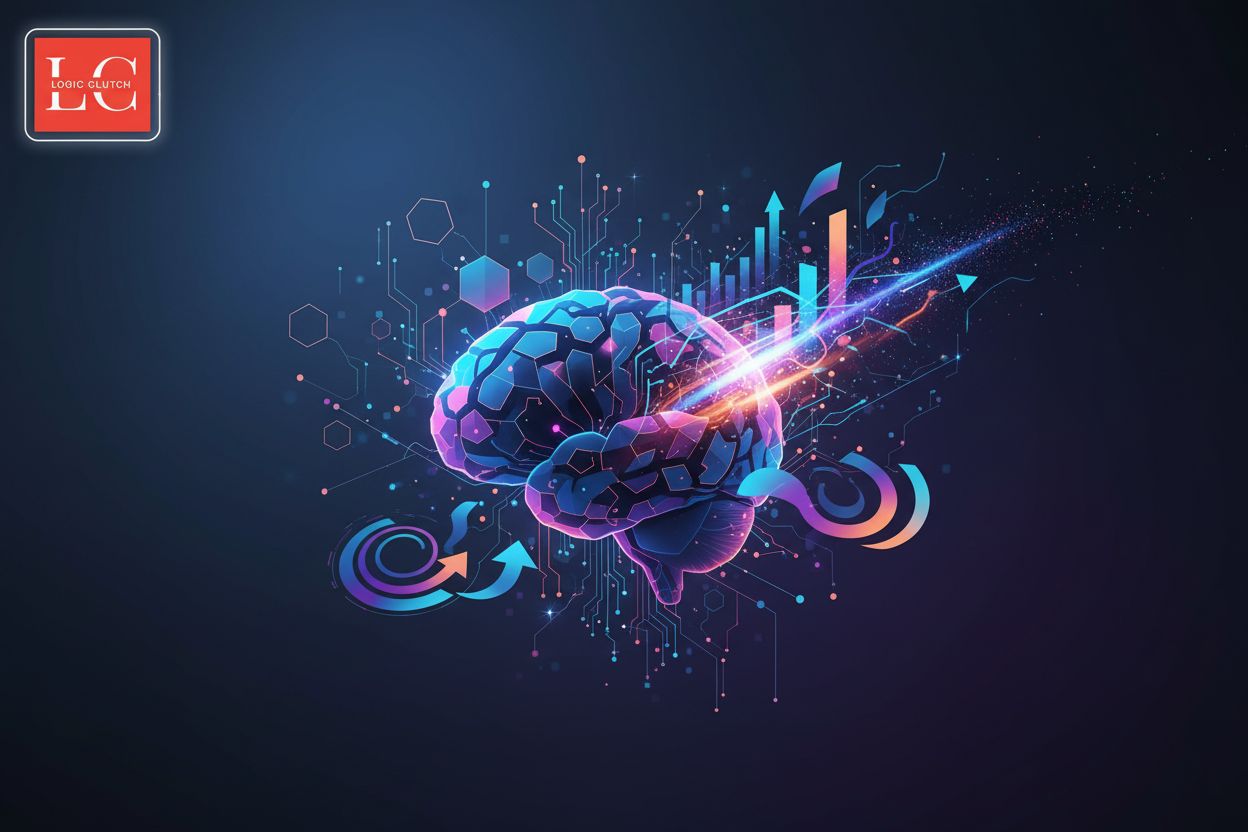AI Analytics and Observability: A Game Changer for Digital Enterprises
TL;DR
Introduction: The New Era of Digital Enterprises
Okay, so picture this: You're running a digital enterprise, and it feels like you're trying to navigate a maze blindfolded. Sound familiar?
The world of digital enterprises? It's kinda wild these days. It's not just about having a website anymore; it's a whole ecosystem of data, cloud services, and interconnected systems that are constantly changing. And, honestly, keeping up can feel impossible.
- First up, there's the sheer explosion of data. We're talking about data coming from everywhere – customer interactions, sensors, applications, you name it. Trying to make sense of it all feels like trying to drink from a firehose.
- Then you got the reliance on cloud and distributed systems. While it offers scalability, it also introduces complexity. You gone got services spread across multiple environments, making it harder to pinpoint issues. Like, is it the database, the network, or something else entirely?
- And let's not forget the need for real-time insights. In todays fast-paced market, you can't wait days or weeks for reports. You need to know now if something is going wrong so you can fix it before it impacts your business.
Traditional analytics tools? They just aren't cutting it anymore.
- They often struggle with unstructured data, like social media feeds or customer reviews. And that's a problem, because that's where a lot of valuable insights are hiding.
- Plus, they're often reactive, meaning they only tell you about problems after they've already happened. What you really want is something that can proactively detect issues before they impact users.
- And don't even get me started on siloed data. Different departments using different tools that don't talk to each other? It's a recipe for disaster. You end up with limited visibility and a fragmented view of your operations.
But, hey, it's not all doom and gloom. There's a light at the end of the tunnel, and it's called ai analytics and observability.
- AI-powered analytics can automate insights and detect anomalies that humans might miss. Imagine having a system that automatically flags unusual activity, like a sudden drop in website traffic or a spike in error rates. Pretty cool, right?
- Observability provides end-to-end visibility across your entire digital ecosystem. It's like having a single pane of glass that shows you everything that's happening, from the front-end user experience to the back-end infrastructure.
- And the best part? It leads to improved decision-making and operational efficiency. With better insights and visibility, you can make smarter decisions and optimize your operations to run more smoothly.
Next up, we'll dive deeper into how ai analytics and observability actually work and how they're transforming digital enterprises.
Understanding AI Analytics: Transforming Data into Actionable Insights
Ever wonder how some companies seem to know what you want before you even do? That's often ai analytics at work, turning mountains of data into gold.
So, what exactly is ai analytics? It's not just your average number crunching; it's more like giving your data a super-powered brain. It's all about using artificial intelligence—specifically machine learning, natural language processing (nlp), and predictive modeling—to find patterns, make predictions, and automate decision-making. Think of it as going from simply seeing what happened to understanding why, and even forecasting what's next.
- Machine learning algorithms are the workhorses here. They sift through data, learning from it without needing explicit programming. For example, in healthcare, machine learning can analyze patient records to predict the likelihood of hospital readmissions, allowing hospitals to proactively allocate resources.
- Natural language processing (nlp) is crucial for dealing with all that messy, unstructured data like customer reviews, social media posts, and call center transcripts. Imagine a retail company using nlp to analyze customer feedback in real time, identifying trending complaints and adjusting their strategies on the fly.
- Predictive analytics and forecasting use historical data to predict future outcomes. Financial institutions, for instance, use it to forecast market trends, assess credit risk, and detect fraudulent transactions.
ai analytics isn't just a fancy buzzword; it delivers real, tangible benefits.
- It boosts accuracy and speed. ai can analyze datasets way faster and more accurately than humans, spotting anomalies and trends that might otherwise go unnoticed.
- It uncovers hidden patterns. think of a manufacturing plant using ai to analyze sensor data from its equipment, identifying subtle patterns that indicate potential equipment failures before they happen. Proactive maintenance saves big bucks, ya know?
- It enhances personalization. ai can analyze customer data to personalize recommendations, offers, and experiences. For example, an e-commerce platform might use ai to recommend products based on a customer's browsing history, purchase behavior, and demographic data.
- And, it helps with risk management. ai can analyze vast amounts of data to detect fraudulent activities, assess credit risk, and identify potential security threats. In the insurance industry, ai can analyze claims data to identify fraudulent claims and prevent financial losses.
Integrating ai analytics with Salesforce data? Now, that's where things get really interesting. This integration allows you to leverage the power of your customer data within Salesforce to improve sales forecasting, enhance customer service, and personalize marketing campaigns.
Common integration methods include using APIs to connect your AI analytics platform with Salesforce, or utilizing specialized integration tools and middleware. For example, an AI model trained on historical sales data and market trends can be integrated with Salesforce to provide more accurate sales forecasts. This might involve an AI platform analyzing opportunities within Salesforce, scoring leads based on their likelihood to convert, and even suggesting the next best action for sales reps. The result? More informed sales strategies and a better understanding of future revenue.
Like, imagine using ai to improve sales forecasting and lead scoring. ai can analyze historical sales data, market trends, and customer behavior to predict future sales performance and identify high-potential leads, you know?
Next up, we'll explore how observability complements ai analytics, creating a powerful synergy for digital enterprises.
The Power of Observability: Gaining End-to-End Visibility
Ever feel like you're flying blind with your digital operations? Observability is kinda like putting on night-vision goggles. It lets you see everything that's going on, end-to-end.
So, what's the deal with observability anyway? It's more than just basic monitoring; it's about understanding the why behind the what. It's about using tools and practices to gain deep insights into your systems based on their external outputs, without necessarily knowing all the internal workings. Think of it as being able to diagnose a car problem just by listening to the engine, even if you're not a mechanic.
- Definition and key components: Observability boils down to three main things: metrics, logs, and traces. Metrics are numerical data points that tell you how your system is performing (e.g., CPU usage, response time). Logs are like a detailed diary of events, recording what happened and when. Traces track a request as it moves through different parts of your system, showing you the path it took and where any bottlenecks might be.
- Moving beyond traditional monitoring: Traditional monitoring tells you if something is wrong (e.g., server down). Observability tells you why it's wrong and what's causing the problem. It's about having a holistic view, not just a collection of alerts.
- Understanding system behavior: With observability, you can ask questions you never thought possible. Like, "Why is this specific user experiencing slow load times?" or "What's the impact of this new code deployment on our database performance?" It's about understanding the complex interactions within your system.
Alright, so why should you even bother with observability? It's not just a trendy buzzword; it actually solves real problems.
- Faster root cause analysis: When something goes wrong, you need to fix it fast. Observability helps you quickly identify the root cause of issues, reducing downtime and preventing further problems. For instance, imagine an e-commerce platform experiencing a sudden surge in failed transactions. With observability, they can trace the requests, pinpoint the failing service, and identify the problematic code, leading to a much faster resolution compared to sifting through logs manually.
- Improved system performance and reliability: By constantly monitoring and analyzing your system's behavior, you can identify areas for improvement and optimize performance. Think of a financial institution using observability to monitor their trading platform. They can identify slow queries, optimize database performance, and ensure the platform remains stable even during peak trading hours.
- Enhanced collaboration: Observability breaks down silos between development and operations teams. Everyone has access to the same data and insights, making it easier to collaborate and solve problems together.
- Better understanding of user behavior: Observability isn't just about technical metrics; it can also give you insights into how users are interacting with your applications. A media streaming company, for example, can use observability to track user streaming quality, identify buffering issues, and optimize their content delivery network (cdn) for a better user experience.
Now, let's talk about how observability fits into the Salesforce world. Salesforce is a complex platform with lots of moving parts, so having visibility into its performance is crucial.
- Monitoring Salesforce api usage: Keeping an eye on your API usage is key. Are you hitting limits? Are certain APIs performing slowly? Observability tools can help you track this and identify potential issues.
- Tracking user activity: Monitoring user activity can help you identify potential bottlenecks or security threats. Are users experiencing slow load times? Are there suspicious login attempts? Observability can help you spot these issues early.
- Integrating observability tools: You can integrate observability tools with Salesforce dashboards to get a unified view of your system. This makes it easier to monitor performance, troubleshoot issues, and make data-driven decisions.
- Real-time monitoring of custom apex code and integrations: Salesforce's Apex code, can be monitored in real-time, along with integrations, to spot problems as they happen.
With observability, you're not just reacting to problems; you're proactively preventing them. And that, my friends, is a game-changer.
Next up, we'll dive into how ai helps analyze this data, turning raw information into actionable intelligence.
Integrating AI Analytics and Observability: A Synergistic Approach
Okay, so imagine trying to assemble a complex piece of furniture with just a hammer and a vague instruction manual. Frustrating, right? That's kinda how it feels to run a digital enterprise without integrating ai analytics and observability.
It's like giving your observability data a brain boost. Instead of just seeing what happened, you can understand why and even predict what will happen next.
- Using AI to analyze observability data and identify anomalies is a game-changer. Instead of humans manually sifting through logs and metrics, ai can automatically detect unusual patterns that might indicate a problem. For example, in the energy sector, ai can analyze data from sensors on power grids to detect anomalies that could lead to equipment failures or power outages.
- Automating incident response based on ai-powered insights means faster resolution times. When ai detects an issue, it can automatically trigger alerts, run diagnostic scripts, and even initiate remediation steps. Think of a large-scale logistics company, where ai can analyze real-time data from delivery trucks, weather patterns, and traffic conditions to predict potential delays and automatically reroute shipments.
- Predicting future system behavior based on historical data lets you get ahead of potential problems. ai can analyze historical observability data to forecast future performance bottlenecks, capacity issues, and security threats. For instance, a major airline could use ai to predict flight delays based on historical weather data, maintenance schedules, and air traffic patterns, allowing them to proactively adjust schedules and minimize disruptions for passengers.
- Identifying and resolving performance issues before they impact users is the ultimate goal. ai can analyze observability data to identify slow queries, inefficient code, and other performance bottlenecks before they cause problems for users. A global bank, for example, might use ai to analyze transaction data and identify potential fraud in real-time, preventing financial losses and protecting customers.
Here's where it gets really interesting – seeing how this actually plays out in different industries.
- Predictive maintenance for critical systems is a big one. Imagine a manufacturing plant using ai to analyze sensor data from its equipment, identifying subtle patterns that indicate potential equipment failures before they happen. Proactive maintenance saves big bucks, ya know?
- Optimizing application performance based on user behavior is all about making things smoother for your users. Think of a media streaming company using ai to analyze user streaming quality, identify buffering issues, and optimize their content delivery network (cdn) for a better user experience.
- Detecting and preventing security threats in real-time is crucial in today's world. ai can analyze network traffic, user activity, and other data to identify potential security threats and automatically take action to prevent them.
- Improving customer experience through personalized recommendations is a great way to keep customers happy. ai can analyze customer data to personalize recommendations, offers, and experiences. For example, an e-commerce platform might use ai to recommend products based on a customer's browsing history, purchase behavior, and demographic data.
According to Gartner, by 2025, AI will be a top three priority for CIOs looking to improve operational efficiency.
Of course, it's not all sunshine and roses. There are some challenges to keep in mind.
- Data privacy and security concerns are always top of mind. You need to make sure you're handling data responsibly and ethically.
- Need for skilled data scientists and engineers is a real thing. You need people who know how to build, deploy, and maintain ai models.
- Integration complexities and data silos can be a pain. You need to make sure your ai analytics and observability tools can talk to each other and access the data they need.
Integrating ai analytics and observability isn't just about technology; it's about transforming how you run your business. It's about being proactive, data-driven, and customer-centric.
Next up, we'll look at the practical steps you can take to implement ai analytics and observability in your own organization.
Case Studies: Success Stories of Digital Enterprises
Alright, let's get real for a sec, seeing is believing, right? So, how are digital enterprises actually using ai analytics and observability to kick butt?
Think about marketing campaigns, right? Company X, a mid-sized e-commerce retailer specializing in sustainable home goods, implemented ai analytics to really personalize them. Instead of blasting everyone with the same ad, they tailored each message to the individual's interests and previous purchases, analyzing browsing history, cart abandonment data, and demographic information. This led to a 25% increase in customer engagement and a 15% uplift in conversion rates over six months.
Lessons learned? Don't be creepy. Personalization is great, but you gotta respect peoples privacy and not cross that line. Transparency about data usage is key.
Then, there's Company Y, a regional bank that used observability to keep a close eye on its cloud-based core banking system. Cloud stuff can get messy, ya know? They implemented a comprehensive observability solution that monitored transaction processing times, database performance, and network latency across their distributed infrastructure.
The payoff? They saw a 30% reduction in average incident resolution time and a significant decrease in critical system downtime, ensuring uninterrupted customer access to their accounts.
Key takeaway? Observability ain't just for big enterprises. Even smaller businesses can benefit from having better visibility into their systems.
Now, let's talk about a company that's really making waves in this space: LogicClutch. They're all about helping enterprises with ai and Salesforce solutions, and they got a pretty cool approach if you ask me. LogicClutch offers services like On-Demand Development, Resource Augmentation, Custom Development, Data Management, Edge Computing, and Computer Vision ai.
- They're experts in Master Data Management and Salesforce crm Solutions. This means they help companies get their data in order and use Salesforce more effectively, ensuring data accuracy and consistency, which is foundational for any AI initiative.
- LogicClutch leverages AI-powered SaaS Solutions for data intelligence. SaaS, or Software as a Service, means they offer cloud-based software that clients can access over the internet. These solutions use AI to help companies make smarter decisions based on their data. For example, their AI-driven analytics tools can analyze customer interaction data within Salesforce to identify patterns in customer churn, allowing clients to proactively implement retention strategies.
- And they've got some impressive success stories. They've helped clients achieve digital transformation and improve their operational efficiencies. One client, a logistics firm, used LogicClutch's AI-powered data intelligence platform to optimize delivery routes, resulting in a 10% reduction in fuel costs and a 5% improvement in on-time delivery rates.
So, what's the bottom line? ai analytics and observability aren't just buzzwords; they're real tools that can help digital enterprises thrive. And companies like LogicClutch are out there making it happen. Next, we'll look at the practical steps you can take to implement ai analytics and observability in your own organization.
The Future of AI Analytics and Observability
The rate at which ai analytics and observability is evolving? It's kinda mind-blowing, right? Like, what's cutting-edge today is old news tomorrow. So, what does the future actually hold?
Edge computing and ai at the edge: Think about it: processing data closer to where it's generated – like, right on the factory floor or in a retail store – reduces latency and improves real-time decision-making. Imagine a self-driving car using edge ai to process sensor data and make split-second decisions, without relying on a distant cloud server. Pretty cool, huh?
Explainable ai (xai) for transparent decision-making: Nobody wants a black box making critical decisions, right? xai is all about making ai models more transparent and understandable. For example, in healthcare, xai can help doctors understand why an ai model made a particular diagnosis, building trust and confidence in the technology.
aiops and autonomous operations: aiops uses ai to automate it operations, from monitoring and incident management to capacity planning and performance optimization. It's like having a virtual it assistant that can handle routine tasks and free up human engineers to focus on more strategic initiatives.
The rise of specialized ai analytics platforms: Forget one-size-fits-all solutions. We're seeing more and more specialized platforms tailored to specific industries and use cases. Like, imagine a platform designed specifically for financial institutions, with built-in models for fraud detection, risk assessment, and regulatory compliance.
Investing in data science and engineering talent: You can't build a data-driven culture without the right people. Companies need to invest in training and hiring data scientists, engineers, and analysts who can build, deploy, and maintain ai models.
Building a data-driven culture: It's not just about technology; it's about changing the way people think and work. Companies need to foster a culture that values data, experimentation, and continuous learning.
Adopting a cloud-native architecture: Cloud-native architectures are designed for scalability, resilience, and agility. They're essential for supporting the demands of ai analytics and observability.
Prioritizing data privacy and security: With great data comes great responsibility. Companies need to prioritize data privacy and security, implementing robust controls to protect sensitive information.
So, what's next? Getting your organization ready for this ai-powered future. That means investing in the right talent, building a data-driven culture, and prioritizing data privacy and security. Onward to implementation strategies!
Conclusion: Embracing the AI-Powered Digital Enterprise
Okay, so you've made it this far, and honestly, that's great! We've seen how ai analytics and observability is changing everything, but how do you make it real? It's about more than just buying some tools, its a new way of thinking.
This journey of continuous improvement involves several practical steps to successfully implement AI analytics and observability in your organization:
- First, driving innovation means experimenting. Throwing stuff at the wall and seeing what sticks, basically. Like, a healthcare provider could use ai to analyze patient data and find new ways to improve treatment outcomes, not just do what they've always done.
- Next, improving decision-making is key. It's not about gut feelings anymore. You want real data to back up your choices. A retailer, for example, can use ai to optimize pricing strategies and inventory management, so they aren't stuck with piles of stuff nobody wants.
- And then, enhancing customer experience. That's the golden ticket, right? A financial institution can use ai to personalize customer interactions and offer tailored financial advice, making people feel like they actually matter.
Think of it as a journey, not a destination. It's all about continuous improvement.
- Start by assessing what you've already got. What analytics tools are you using? What observability practices do you have in place? No point in buying new stuff if you aren't even using what you have.
- Then, figure out your priorities. What's the biggest pain point in your business? What problem do you need to solve right now? Maybe it's reducing downtime, maybe it's improving customer satisfaction.
- And, yeah, consider partnering with someone who knows there stuff. Implementing ai and observability can be complex, so getting help from experts can save you a lot of headaches.
- Finally, start small. Don't try to boil the ocean. Pick one use case, implement a solution, and then scale from there. Baby steps, people.
Embracing ai-powered digital transformation? It's not just a tech upgrade, it's a whole new mindset. And honestly, the potential is huge.







